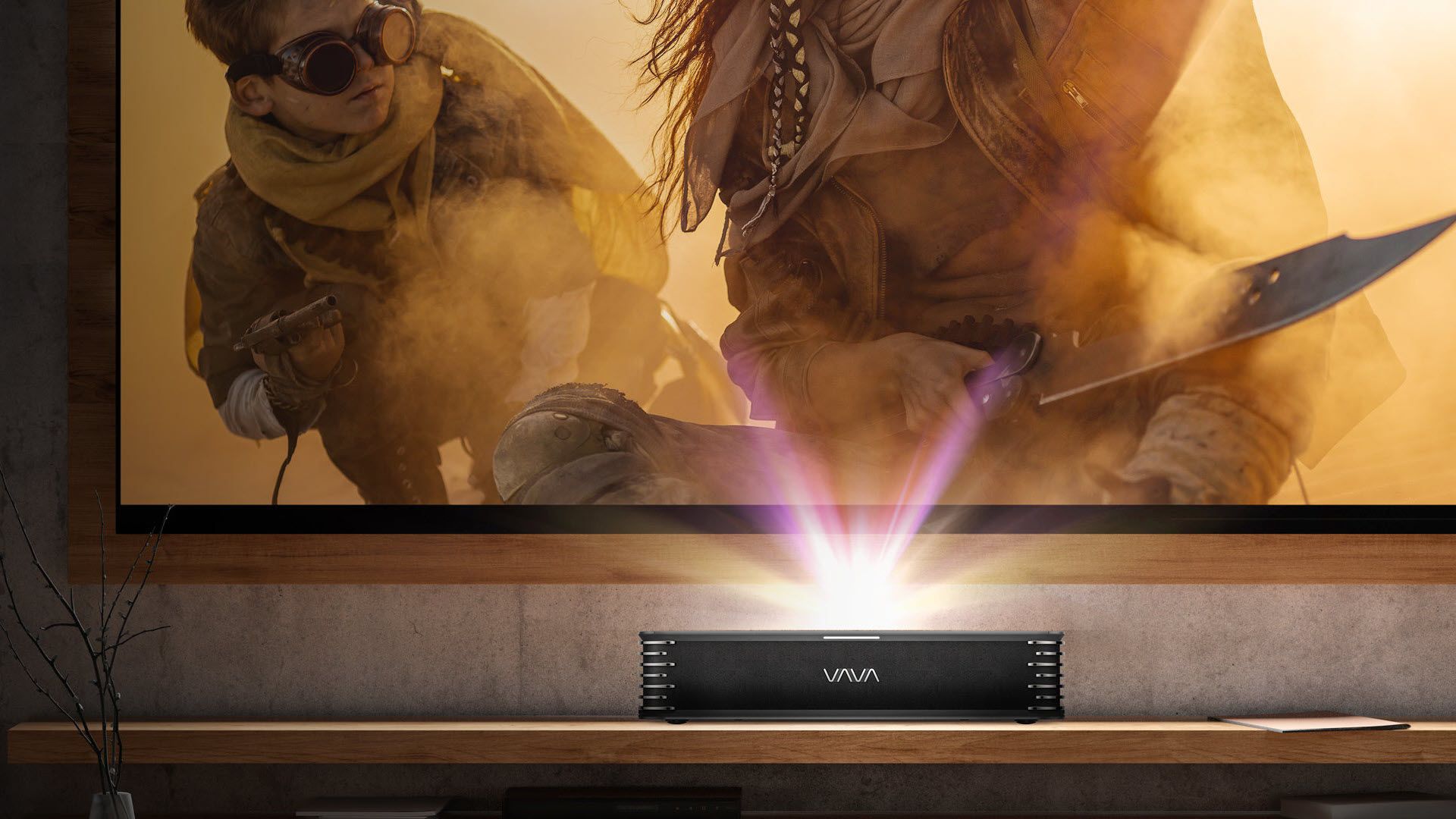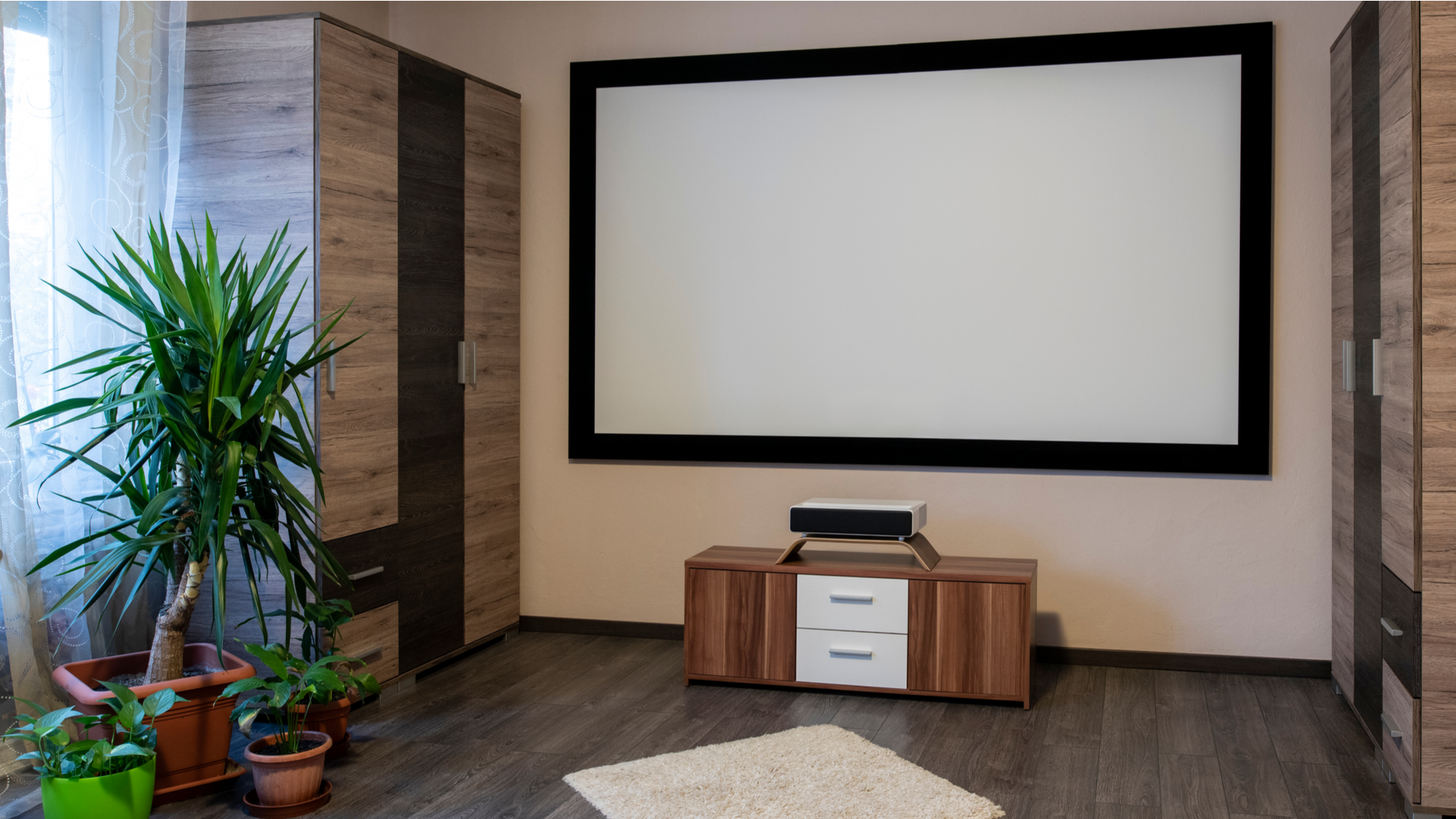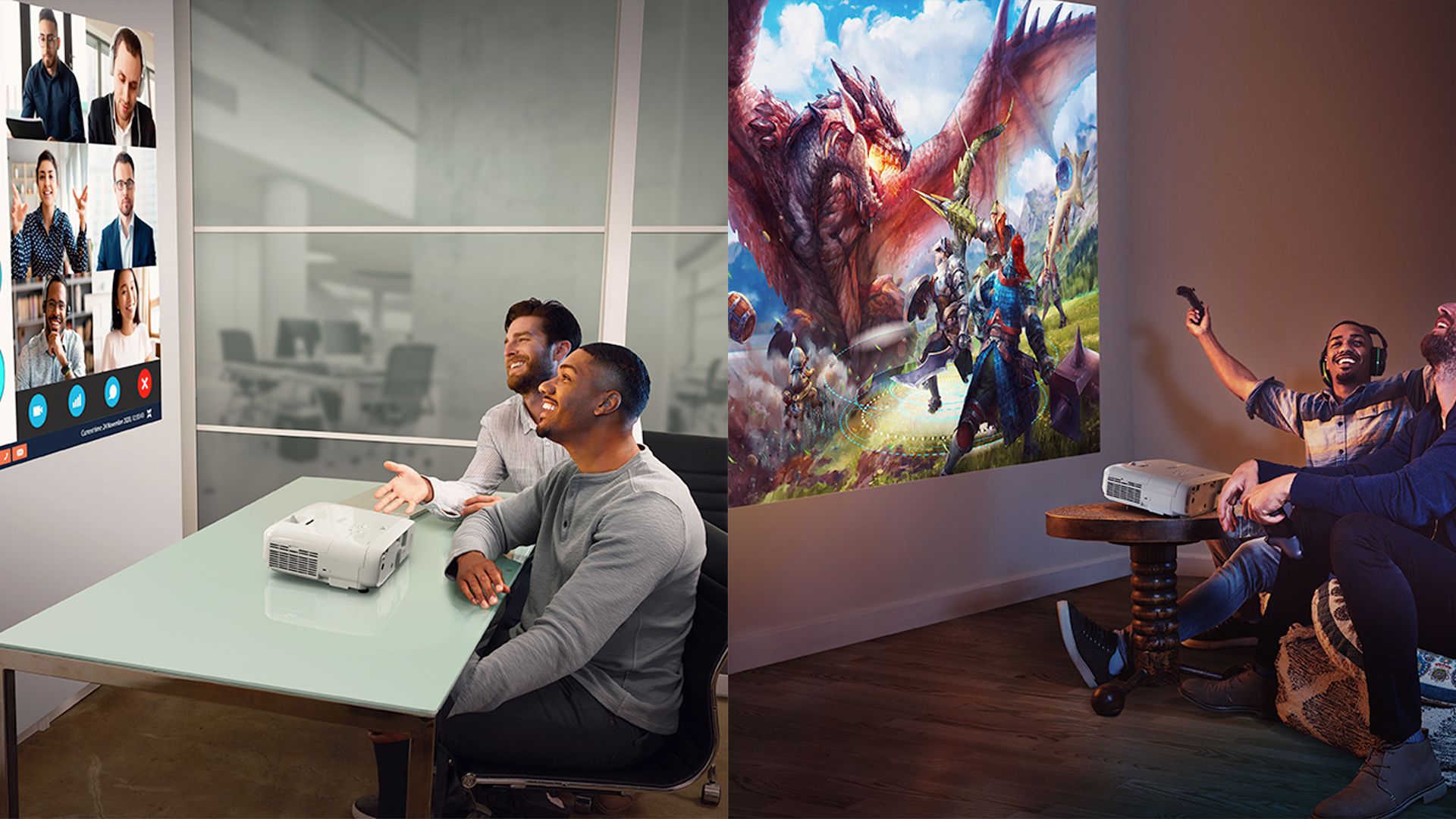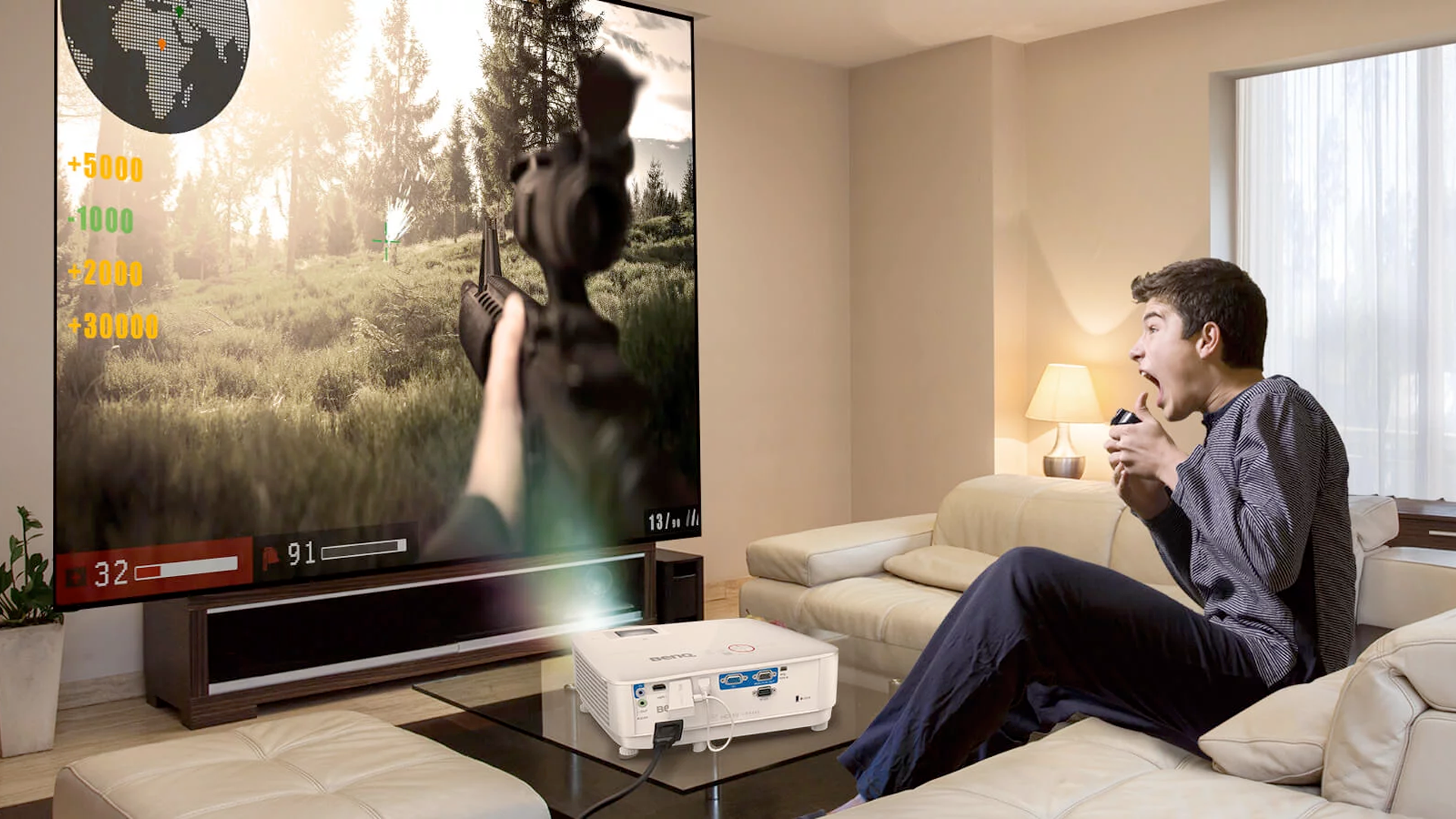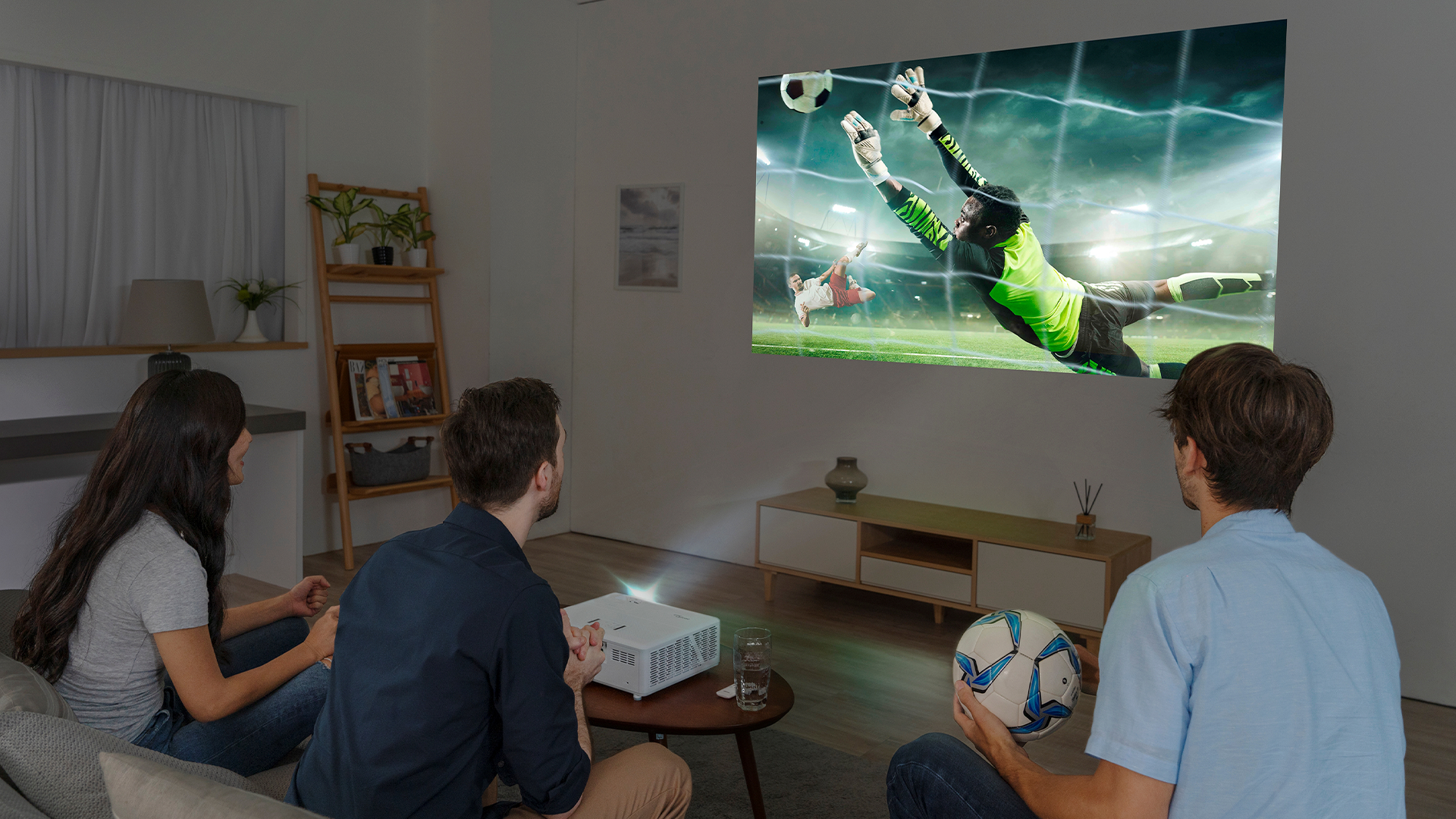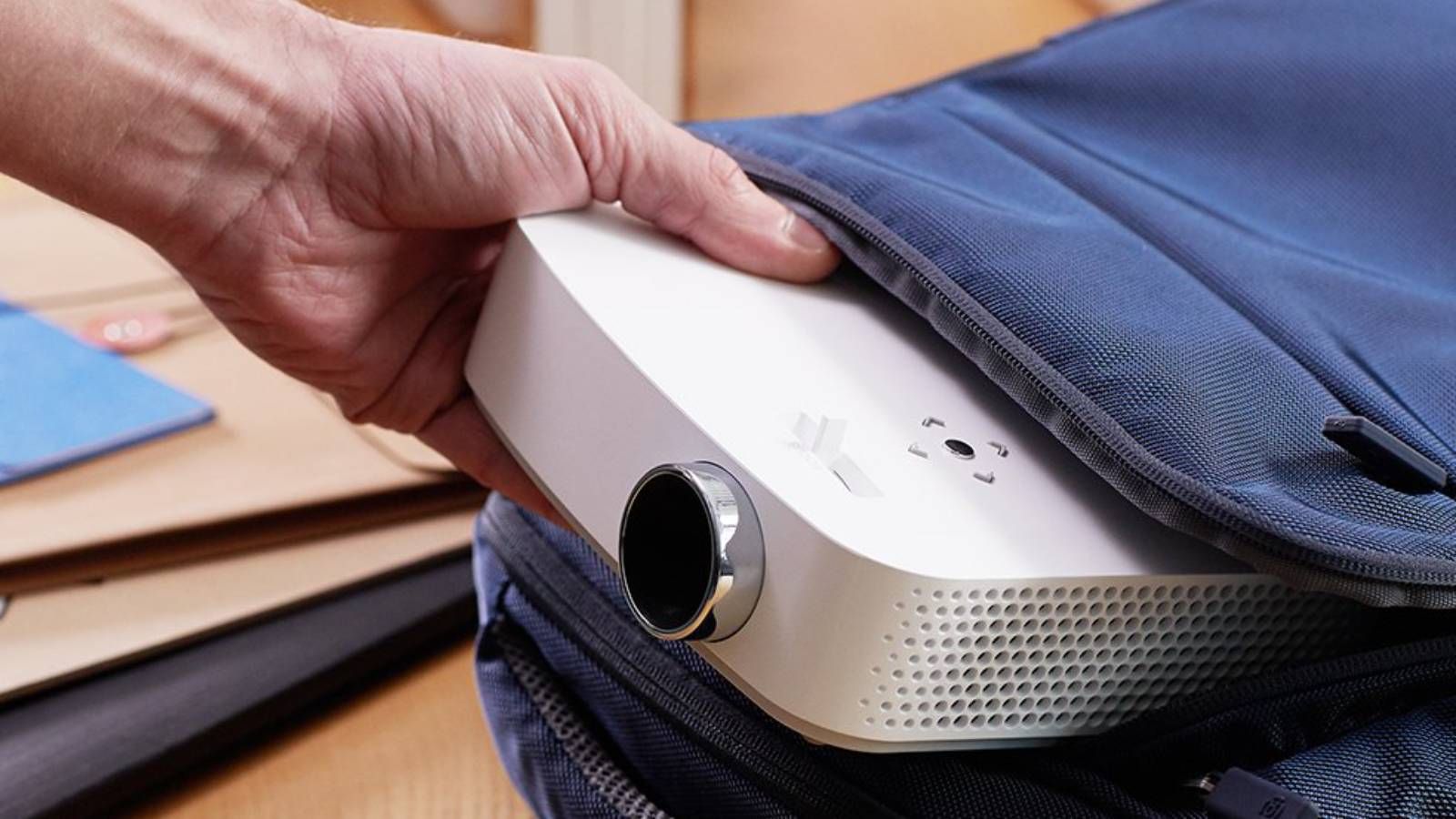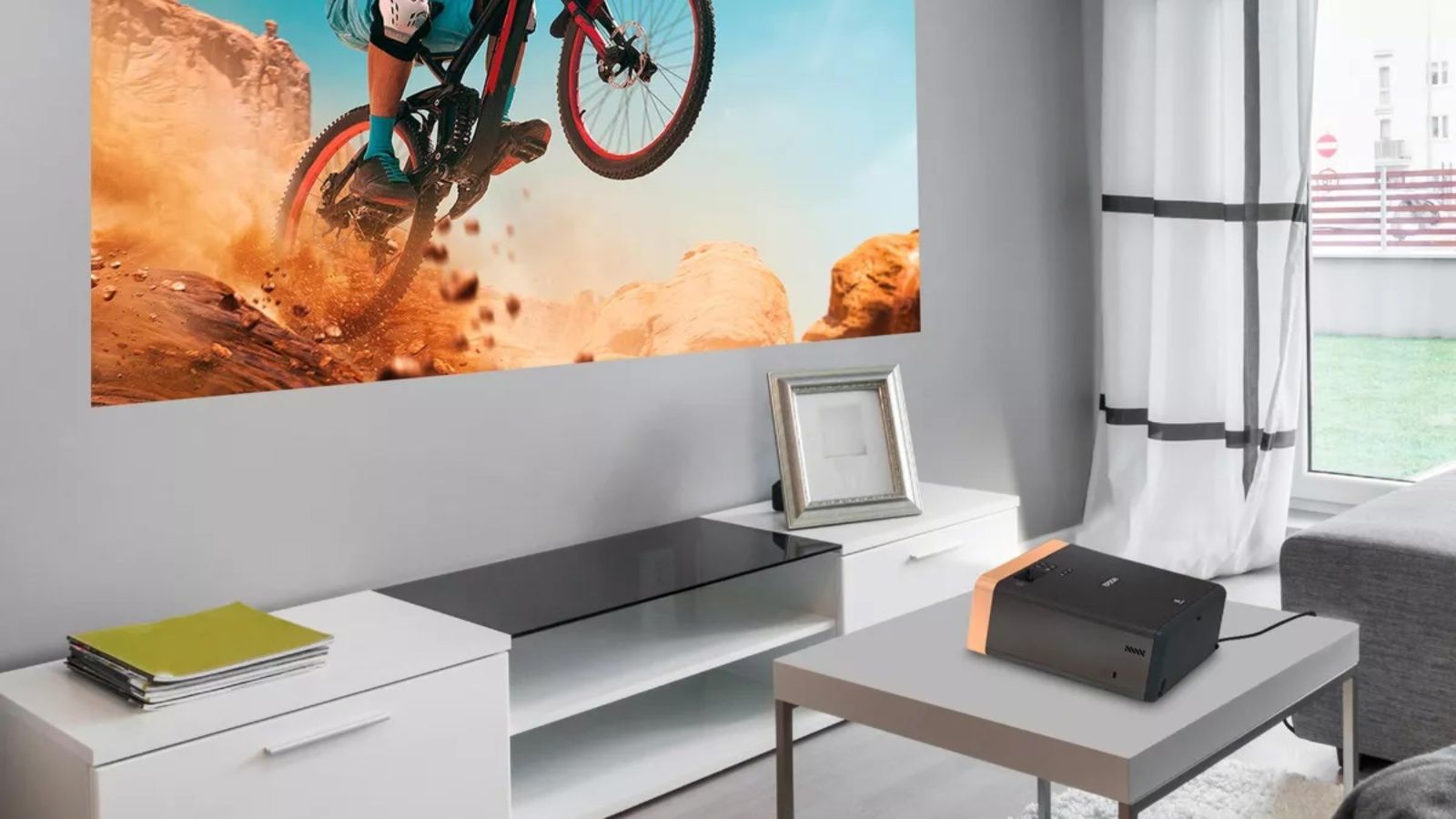Quick Links
TVs have dominated the world of home entertainment for decades. But projectors are around the same price, take up less space, offer a better experience, and are far more versatile. It's time to dismiss the idea of a TV upgrade and join the projection party.
While the idea of "operating" a projector may sound complicated and conjure thoughts of messing around with reels of film, it isn't complex at all. During the initial setup, you may have to spend a couple of minutes adjusting the focus and keystone with some models---but beyond that, it isn't really any more complex than turning on a TV.
A wide range of projectors is also available to suit different needs. On a tight budget? No problem. Short on space or living in a small apartment? Short throw models have your back. Need something ultra-portable? You get the idea.
So let's take an in-depth look at why a projector is a far better option than a new TV.
Projectors Are About The Same Price as TVs
Small TVs are available for around $100, while a top-of-the-line 8K model will set you back a few thousand. Projector pricing follows a similar logic. You can pick up a cheap 1080p projector for under $100 these days. That cheap projector will also give you a 100-inch display, while the cheap TV might be the size of a laptop screen. TVs that offer similar screen sizes to projectors tend to cost thousands of dollars---more on that later. As you would expect, there is a vast difference in quality between affordable, mid-range, and high-end projectors.
If you want to dip your toes into the pool of projection, the cheap projectors aren't all that bad. You'll get a large, HD image that, when combined with a soundbar and a dark room, can create a reasonable home cinema experience.
Though, when you hit the mid-range (around $500 to $1000) you will see several benefits. For a start, the whole image will be in focus; the cheaper models only tend to have the middle of the picture in focus, while the top and bottom can be a little fuzzy. You will also be able to watch what you want during the daytime with the curtains open or the lights on in the evening.
At the top end, for those who are happy to drop a few thousand dollars on their entertainment systems, you have your 4K and 8K projectors. You will also see features like "ultra-short-throw" projecting, which produces a large image despite the projector essentially touching the wall.
So in terms of price and functionality, there's something for everyone. If you spot a good deal, you might even get a little bit extra for your money.
Projectors Take Up Less Room
The projectors themselves can be small and light---meaning they take up less room while out, and they can be stashed away in a cupboard if needs be. If you don't mind, a bit of DIY projectors can also be mounted in relatively out-of-the-way places, like on the ceiling.
Similarly, a rollable screen will allow you to make use of the wall you usually project onto. You can put pictures and decorations up, then roll the screen down when it's showtime. Once the projector goes away, roll the screen back up, and there's your beautifully decorated wall again. Live, laugh, love!
Despite Their Size, Projectors Pack a Visual Punch
Unlike a cheap TV, an inexpensive projector will fill most of your wall. Most projectors, including the cheap ones, throw out a 100 to 120-inch display, like the Vava 4K Ultra-Short Throw, which can go up to 150 inches while still within two feet of your wall and without compromising image quality.
To put those display sizes into context: 100 inches will dominate a large wall, and 150 inches may be a bit too large for comfortable viewing. Projectors don't suffer from that odd effect that makes large TVs look smaller when mounted on the wall---so you will see every bit of that 100-inch display.
While you will get a good image on any white or very lightly colored wall, a decent quality projector screen will take things to the next level. As mentioned earlier, retractable screens are available if you want to do other things with your wall---though fixed screens are cheaper. A good quality screen coupled with a mid-range projector can produce TV-quality images.
Great For Gatherings
This is where projectors stand out. A projector can be the centerpiece of a gathering or a welcome enhancement to a party.
To start with the obvious, if you're using a projector, your movie nights can come close to an authentic cinematic experience. If you add a decent sound system, turn out the lights, hand out some popcorn, and your place will soon be the go-to place for film releases and Netflix specials.
My projector makes watching sports at home something special. Boxing, in particular, is excellent to watch on your own big screen. It piles more atmosphere on an already atmospheric sport, and the fighters being close to life-sized is as close as you'll get to ringside without actually being there. Projection also works with other sports and can make a proper occasion out of a big game.
Video games also benefit from projection. Anyone who played a multiplayer game on a portable TV in the 90s will know how awful a concept split-screen is. Well, it isn't bad on a projector screen as four players will have 25 inches a piece to focus on. Graphically intense games look mind-blowing at that scale. Something about having most of your vision taken up really adds to the immersion.
If you're just projecting onto your wall, you could also save a bit of money when your pal scores a last-minute winner on FIFA and your controller gets launched towards the "screen". Yes, your anger issues have just destroyed a $50 controller, but at least you haven't obliterated a 4K TV as well. Input lag is a potential issue for gamers who use projectors---but specialist gaming projectors have solved the problem.
In terms of atmosphere, having a dark room with music videos projected onto the wall gives parties a great 90s vibe. If you don't want to stare at a to-scale image of Liam Gallagher's massive head, you can play some kind of visualizer. Colors and shapes do a lot to bring a dark chill-out room to life.
Projectors Can Be Portable
A standard projector's size and weight aren't just helpful for storage or shifting it around the house. They can often be boxed up and transported with greater ease than a TV---which means your friends' gatherings and games nights can also have the benefits of a projector. Your projector's portability doesn't just benefit other people. Are you holding a garden party during the summer? Why not whip the projector out and watch a movie once the sun goes down.
Specialist mini-projectors are available if a standard projector is still just a bit too bulky for you. Mini-projectors can be battery-powered and as small as a soda can---while still throwing up 100 plus inch displays. There is also a range of accessories that will help you take your big screen out and about.
There Are Some Downsides
Projectors usually rely on bulbs, which create heat and require cooling. As a result of the fans, you need to keep the temperature in check---projectors are far noisier than TVs. The bulbs will also die after a few thousand hours of viewing, leading to you either having to replace your bulb or buy a new projector every few years.
Other light sources also cause issues, leading to a faded projection or an almost invisible display. You might be unable to use your projector during the day, or you'll only have half of the screen visible when you put a lamp on.
Finally, for projectors that have to be placed across the room, you have to deal with the fact your picture depends on an uninterrupted beam of light going from your projector to the wall or screen. This can be a problem when someone gets up, walks in front of the lens, or a small child decides shadow puppet theatre is more entertaining than your movie choice.
The Problems Come With Solutions
Admittedly, projectors do face problems that TVs don't, and you have to account for those factors. Even expensive projectors are still noisier than a TV, but a decent sound system will cancel out that fan noise to the point where it isn't noticeable. And a good quality soundbar set to a reasonable volume can overpower the sound made by fans in a cheap projector.
If the thought of your bulb burning out in 2000 to 3000 hours is putting you off, consider getting a laser projector. Laser projectors tend to be on the higher end of the price scale, but you won't have to replace a bulb.
A top-end model can also solve the issue of people walking in front of your projector while it's on. It's impossible to walk in front of an ultra-short-throw projector as it usually touches the wall. Someone would also need to be skirting the wall to get in front of a standard short-throw projector. A cheaper way to avoid people obscuring your picture involves purchasing a bracket and mounting the projector to your ceiling.
Then there is the problem of ambient light ruining your picture. Again, the stronger, more powerful projectors are less affected by other light sources. But thick curtains, a good quality screen, or a combination of both will allow you to use your projector at any time of the day.
We've hit a point where the projectors are in the same price range, offer a similar picture quality, and are easier to use---while offering a better experience than a TV. Yes, there are issues, but they can be worked around and the overall experience is worth the effort. In addition to everything else, the range of projectors currently available means there is more than likely something to meet your budget and individual requirements.
I feel comfortable saying that projectors have hit the point where they are comparable, if not noticeably better, than televisions. Because of that, they're at least worth considering when you're updating your home entertainment system. That is if you don't want to ditch the idea of a new TV entirely and go with the obvious choice of a new projector.

